Tourist Place in TirupatiPopular pilgrimage for Hindu devotees of India, the city of Tirupati, is located in Andhra Pradesh, India. The town is known as the "Divine Capital of Andhra Pradesh" and is dedicated to the significant Hindu shrine of Tirumala Venkateswara Temple, as well as other ancient temples. It is situated 258 miles (415 kilometers) southwest of Amaravati, the state's capital. It is one of the eight identity temples (Swayam Yaksha Kshetras) devoted to the Hindu Lord Vishnu. Tirupati serves as the administrative center for the Tirupati Revenue Division, Tirupati (urban) Mandal, and Tirupati (rural) Mandal. 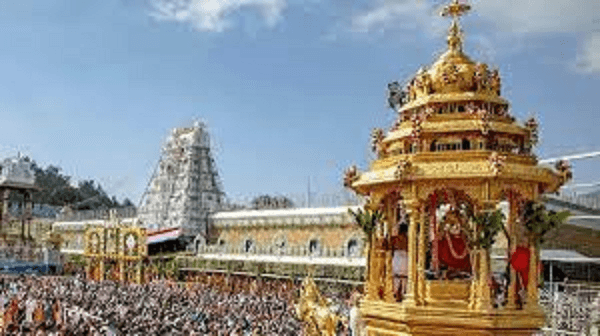
It is the ninth largest populated city in Andhra Pradesh as of the census of 2011, with a population of 287,035 people. With a population of 459,985, it is the 7th most urbanized city in the state. Following Kurnool, it is the second-largest town in Rayalaseema. The Indian Department of Tourism awarded Tirupati the "Best Heritage City" for the year 2012-2013. The Indian government has chosen Tirupati as one of the 100 Indian cities to be transformed into smart urban areas as part of the Smart Cities Mission. 1. Sri Venkateswara Temple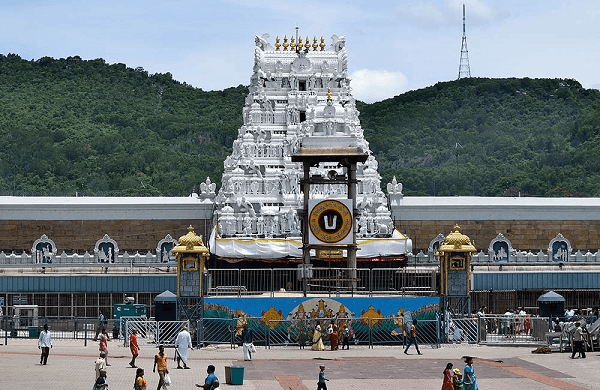
The well-known divine temple in Tirupati, Sri Venkateshwara Temple, attracts visitors and pilgrims all year long. Millions of followers come to this one of the richest and pure temples in the world to show their respect. Around 50,000 pilgrims visit the temple every day, which is a big number. As a result, a complete process has been developed and put up that concludes with the darshan at the temple. The temple was created in the 12th century, and the best time to visit it is in the September and October months due to cold and pleasant weather. The Vaikuntam Queue Building, a network of connected halls that leads to the main temple, serves as the entrance to the Pilgrimage. With the different amenities offered, these rooms are tidy and cozy. 2. Akasaganga Teertham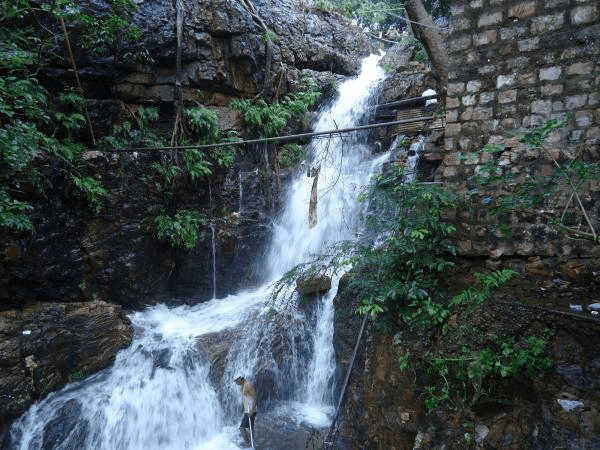
A popular waterfall in Tirupati called Akasaganga Teertham is situated 3 kilometers away from the main temple. The waterfall, which has great religious importance, has water flowing throughout the year. The tourists can also visit Gogarbham, Sri Venugopala, and the Devi shrine, which is located fairly near the waterfall. The waterfall is stunning to behold during the monsoons. One of Tirupati's most well-known waterfalls is this one. Because of its religious significance, travelers frequently visit this site. 3. Sri Govindaraja Swamy Temple, Tirupati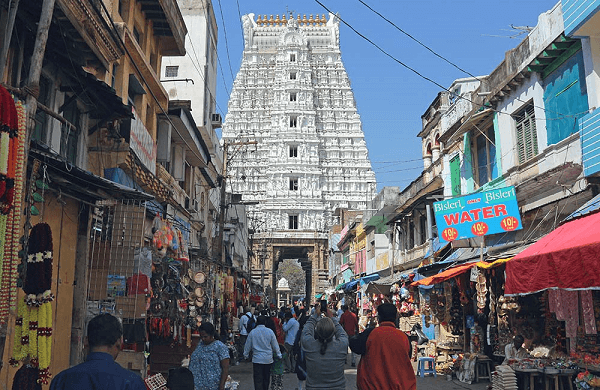
One of the largest temple complexes in the area is Sri Govindarajaswami Temple, a Hindu Vaishnavite shrine constructed by Swami Ramanujacharya in the 12th century. Govindarajaswami, another name for Lord Vishnu, is the reigning divinity. The stunning traditional Dravidian architecture and its rich heritage draw a considerably large number of visitors each year. Legend has it that the dwelling god successfully used King Kubera's money to organize his younger brother Lord Venkateswara and Padmavathi Ammavaru's grand wedding. Each year, thousands of visitors travel here in the hope that God's graces will enable them to rise in status and manage their wealth effectively. This seven-story Vaishanvite temple's Dravidian-style structure is stunning to witness. 4. Sri Padmavathi Ammavari Temple, Tirupati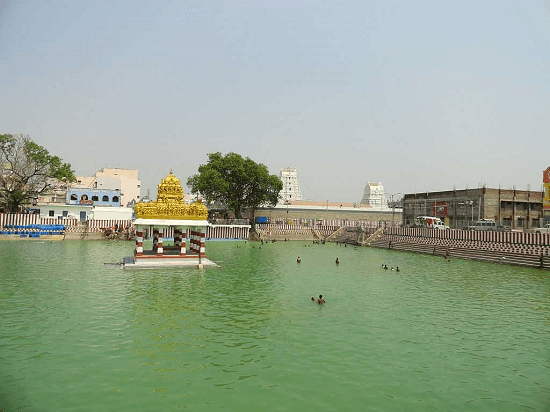
One can visit the Sri Padmavathi Ammavari Temple, which is devoted to Devi Padmavathi, away from the central city zone. This building, one of the several holy ones in Tirupati, is the site for numerous myths and tales involving the Devi. According to mythology, Akasha Raja of Thondamandalam discovered a young girl in a lotus flower while he was performing a large yagna and had the ground tilled, giving rise to the term. He was requested to adore and raise the baby in the sky. She wedded Lord Venkateshwara when she was a young woman. On their faith path through the town, worshippers usually stop at the shrine. 5. Swami Pushkarini Lake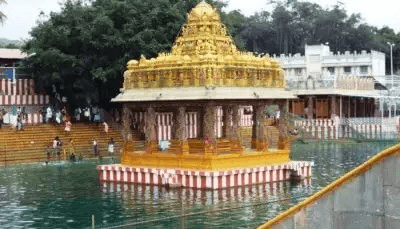
Swami Pushkarini Lake is next to the Sri Venkateshwara Temple. According to mythology, the lake was situated in Vaikuntham and dedicated to Lord Vishnu. Highly revered, the pilgrims frequently bathe in this lake's waters prior to visiting the major shrine. It is claimed that Lord Venkateswara himself bathed in this pond with his paramours, making it a location of the deepest veneration and sacred importance. The lake is compared to the powerful River Ganges in terms of holiness. While visiting the shrine, it is tradition to take a bath in this incredibly sacred tank that is nearby. As per folklore, Sri Maha Vishnu's joy tank, Swami Pushkarini, was carried and placed on earth by Garuda for Sri Venkateswara's amusement. The Sri Venkateswara temple is situated close by. Visitors are said to be cleansed of their guilt and granted worldly success after taking a bath in the Swami Pushkarini. Before entering the main temple, travelers take a bath in this. Those who have done a lot of good in their former lifetimes are blessed after taking a bath in Swami Pushkarini. The devotees believe that they receive nirvana ( salvation) as a result. 6. Silathoranam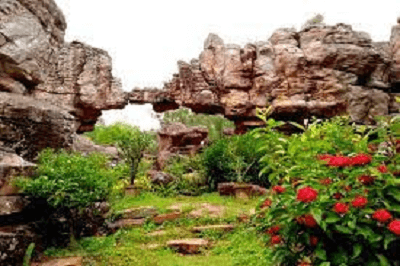
The Silathoranam, one of several historical natural attractions, is currently recognized as a significant archeological and cultural landmark. There are only 3 such natural geological formations that exist on the entire planet. Geologists and archaeologists support several ideas, but there are also myths associated with rock creation that relate it to the Lord Venkateswara idol. The government of the region guards the mountain range since it is a historic site. Silathoranam is, however, a designated National Geo-heritage Monument. In Telugu, Sila denotes rock, and Thoranam indicates "a garland draped over a barrier, linking two vertical columns or an arch as in this instance." There are 3 distinct myths about the arch that are connected to the well-known Lord Venkateswara shrine in the Tirumala Mountains. One interpretation holds that the arch represents the origin of the Lord Venkateswara or Lord Balaji statue at the Tirumala mountain temple because it resembles the hood of a serpent, a conch (Sanskrit: Shank), and a discus (Sanskrit: chakra), all icons of adoration in Hinduism. The second theory states that the Tirumala temple's primary god is the same height as the arch. The third story behind the location of the arch is where Lord Vishnu, also recognized as Balaji or Venkateswara (the main deity of the Srivaishnava culture) at the Tirumala holy city, is said to have placed his first foot. This location is famous as Padalu or Sreevaripadalu (Telugu language: Divine footprints). The following action is instead said to have been situated where his idol is currently revered in the shrine at Tirumala. 7. Vedadri Narasimha Swamy Temple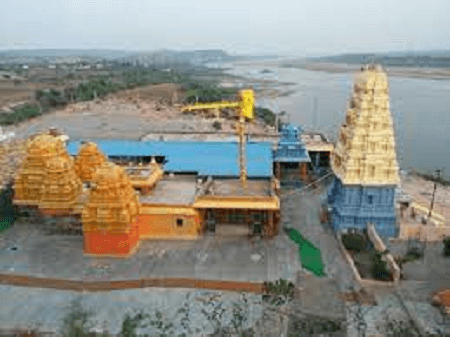
In Vedadri, Chillakallu, Jaggaiahpeta, Krishna Region is the Pancha Narasimha Kshetram known as the Vedadri Sri Yogananda Lakshmi Narasimha Swamy Mandir. Jwala, Veera, Salagrama, Yogananda, and Lakshmi Narasimha are the temples for Pancha Narasimha. Yogananda Narasimha Moorthy carries a weapon and is renowned for curing illnesses. The primary deity is pointing westward to the Krishna River. The annual Kalyanotsavam will begin on Vaisakha Suddha Ekadasi and last for 8 days. According to legend, Sage Rishyasrunga performed the same rituals as Kalyanam to honor a heavenly wedding with the gods of Utsava, Narasimha Swamy, and the deity Lakshmi Shrine. 8. Deer Park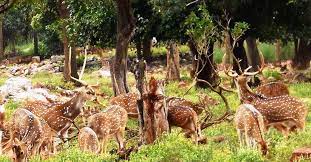
You don't have to limit your vacation interests to going on devotion trips when you're in Tirupati. For those who enjoy the outdoors and wildlife, the Deer Park in Tirupati is a worthwhile excursion. On your journey to Tirumala, you can halt at the Deer Park to soak in the pleasant company of deer in their natural setting. In the park's beautiful greenery, you may observe herds of deer thriving and even treat them by hand. This park, which is surrounded by breathtaking natural views, makes a great getaway from the hectic life. You can go there to unwind and spend a bit more time alone. The Deer Park Reserve is a welcoming area for tourists that permits amicable interactions with the deer and breathtaking sights of the surroundings. 9. Sri Venkateswara National Park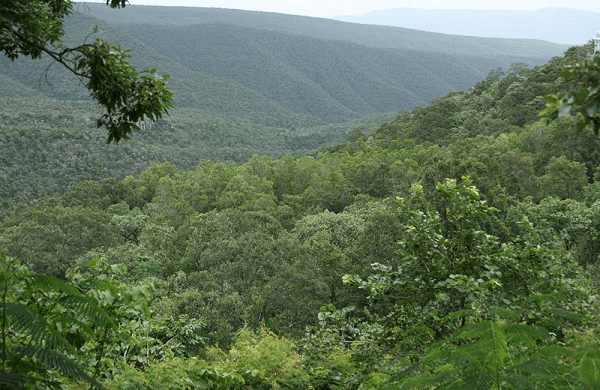
About 350 square kilometers of land in India's the Eastern Ghats are taken up by the bio reserve known as Sri Venkateswara National Park. The park has rich biodiversity and a number of waterfalls that are very well renowned. It has amazing characteristics and a beautiful natural setting, so if you are interested in learning much more about the plants and wildlife of Tirupati, you should visit this national park. This national park is home to indigenous tree species such as Red Sanders, Shorea thumburggaia, and Sandalwood. Since there are 178 different species of birds to be seen here, you can as well bring your binoculars on your vacations. Regarding biodiversity, this national park is well-known for having species such as leopards, prehistoric elephants, sloth bears, spotted deer, and many other things to visit. 10. Kapila Theertham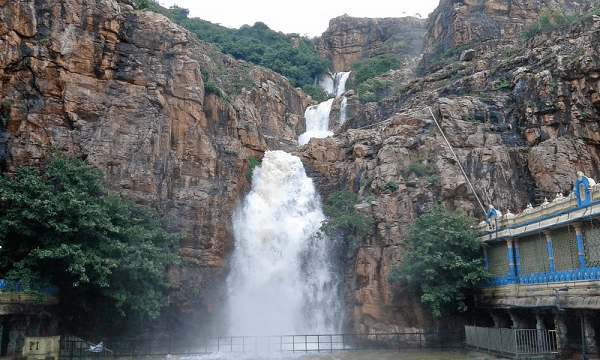
A magnificent waterfall at the foot of the Seshadri Mountains is just 4 km away from Tirupati Kapila Theertham. A sight to behold is a spring of sparkling white waters that descend from a depth of 100 meters within the Kapileshwar Temple grounds. The primary temple of Lord Shiva in Tirupati is called Kapeela Theertham, and its Shiva Lingam is made of steel. You will be amazed when you approach the temple's interior and view the enormous stone statue of Nandi, god Shiva's supreme devotee. On significant festivals like Annabhishekam, Maha Shivaratri, Vinayaga Chaturthi, and Brahmotsavam, many devotees visit Kapila Theertham. The location is known as Kapila Theertham, following Saint Kapila Maharshi, who is supposed to have resided here and worshipped and meditated in the cave in front of the idol of the deity Shiva. Sage Kapila is supposed to have seen a visual of Lord Shiva and his wife as a gift. Between the 13th and the sixteenth centuries, this shrine enjoyed excellent patronage from the Kings of Vijayanagara, particularly Krishna Devaraya. Inside the grounds of the head temple, there are numerous sub-shrines, which include shrines dedicated to Sri Krishna, Agastheeswara, Vinayaka, Subramanya, and Kamakshi. The waterfall and the temple are both regarded as extremely holy. A holy bath at this location is thought to cleanse believers of all evils. 11. TTD Gardens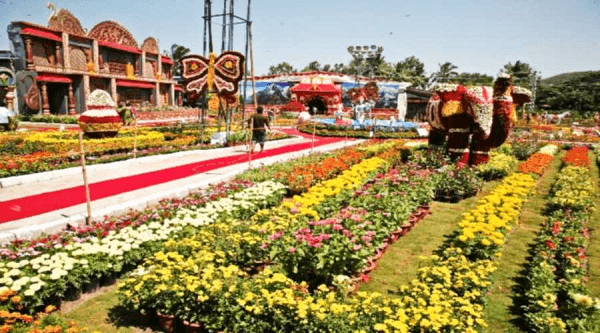
The TTD gardens in Tirupati are a beautiful sanctuary with meticulously maintained gardens and elaborately designed parks. The garden, which covers a combined 462 acres in Tirupati and Tirumala, cultivates flowers for most of Tirupati's temples. The initial tree plantings in this area are credited to the famous Vaishnav saint Sri Ramanuja and his pupil Sri Anandalwar in the fourteenth century. According to legend, Sattada SriVaishnava planted the flowers in this park while posing as Dasa Nambis and producing floral garlands for the Tirumala-Tirupati shrine. The enormous garden is home to a wide variety of vibrant hybrid bougainvillea, hibiscus, crotons, and some other plants that are undoubtedly a wonderful sight. The park has nurseries in four separate locations, including Tirumala at Travellers Bangalore, Gogarbham Dam, Padmavathi Guest House, and Divyanamam, in which approximately 10 lakh plants are grown yearly. Every year, they host a horticultural exhibition and a Pushpa Yagnam where tourists can see fantastic flowers on showcase. 12. Chandragiri Fort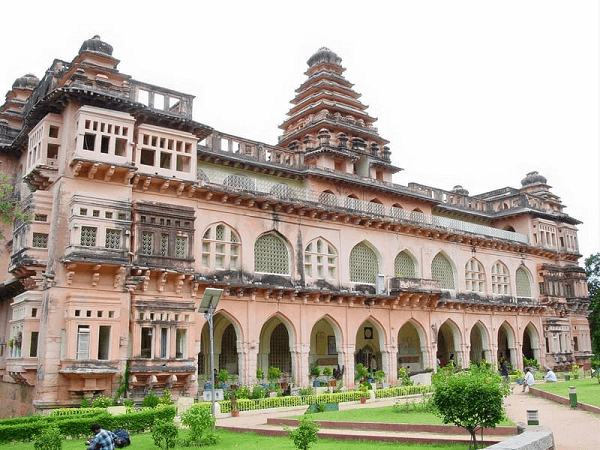
One of the famous spots to see in Tirupati is the enormous Chandragiri fort and its magnificent palaces, the Raja Mahal and Rani Mahal. It provides thrill seekers with a fantastic hiking location because of its position in the Chittoor area, which is surrounded by beautiful forests. The Chandragiri Fort, which was built in the eleventh century, is a magnificent example of Indo-Saracenic construction. The fort's design is perfectly accomplished of stone, brick, and cement concrete without the use of any wood across the overall infrastructure, making it distinctive. As the 4th and also last capital of the Vijayanagara Dynasty under the rule of the Yadava Naidus, Chandragiri Fort created history for the Indian Nation. This location draws visitors from all across the nation because of its rich legacy. The Raja Mahal Palace is now a museum of archaeology. Hindu architectural features can be seen in the majestic three-story palace with capping towers. The palace was built entirely out of stone, brick, and lime mortar. The durbar hall's central tower climbs over two stories. According to historical accounts, Sri Rangaraya gave the British permission to build Fort St. George there around 1640. Huge pillars support the flooring, and the ceilings are ornamented with beautiful cement and plaster work. In terms of design and implementation, the Rani's Palace is incomparable to the Raja's Palace. Contrary to popular opinion, which holds that this location was intended for the queen, documents found at the bottom indicate that this structure was really utilized as a general's chambers.
Next TopicTourist Places in Gangtok
|
 For Videos Join Our Youtube Channel: Join Now
For Videos Join Our Youtube Channel: Join Now
Feedback
- Send your Feedback to [email protected]
Help Others, Please Share









